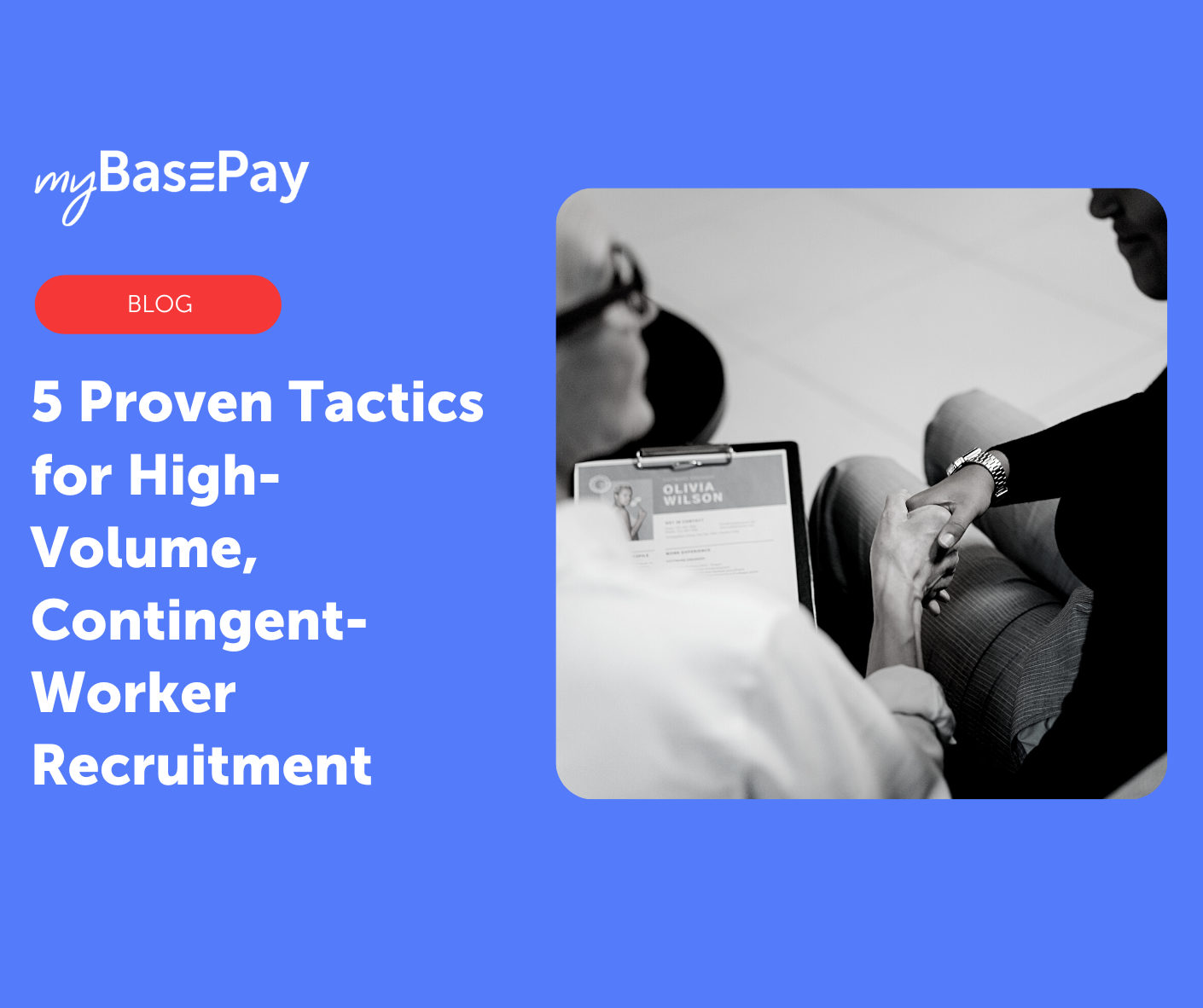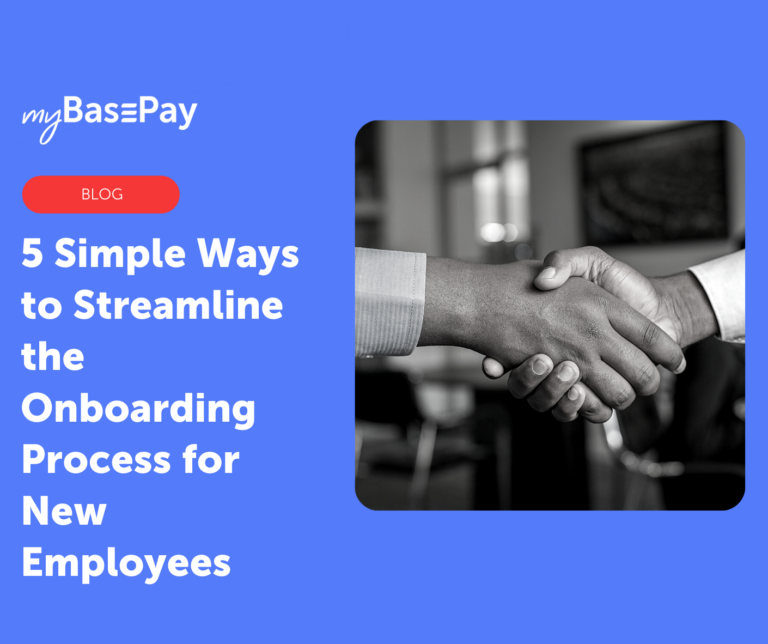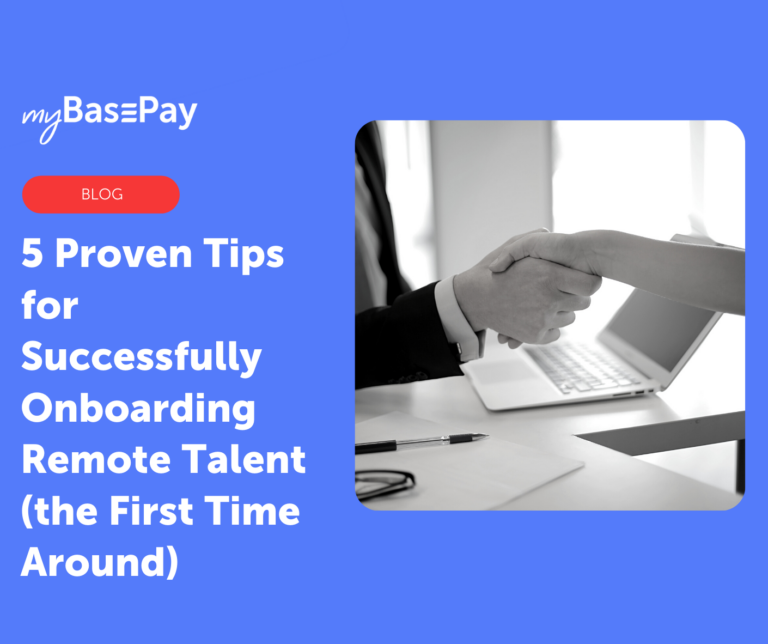5 Proven Tactics for High-Volume, Contingent-Worker Recruitment
As companies look for ways to stay agile in a highly-competitive and changing market, demands for contingent workforces increase each year. The year 2020 already sent shockwaves through the global workforce, affecting workplace trends, business demands, and recruitment strategies.
Now, as the world attempts to recover from the pandemic and its resulting new reality, companies shift their focus to high-volume contingent worker recruitment. However, hiring the right talent is one thing, but doing it at a large scale is another challenge.
In simple terms, high-volume recruitment — or “mass hiring” — refers to hiring multiple candidates in a short period. For some recruitment teams, high-volume hiring can be time-consuming, meticulous, and repetitive — often causing miscommunication and disorganization.
But thanks to new technologies and digital resources, recruitment teams can quickly and effectively bring numerous workers into their organization. While this might sound complex, using the right strategies can ensure that high-volume hiring is an accurately automated and streamlined process.
Here are five strategies to best build a high-volume contingent workforce:
1. Leveraging Data and Analytics
One of the most common challenges recruitment teams face with high-volume hiring is too many applications to review with too little time to do so. Fortunately, digital transformation has given businesses the ability to utilize data and analytics to quickly assess multiple candidates at once.
Not only can this data be leveraged to optimize your hiring pipeline, but it can also help your teams understand weak points. For instance, if you’ve attempted to conduct high-volume hiring in the past, you may have experienced lengthy candidate review processes.
With data and analytics, you can make the most of gathered information and eliminate any unnecessary, time-consuming steps in your recruiting process.
There might be some additional points to consider, such as identifying the most effective source of hire. Understanding which paid and organic sourcing initiatives are driving the most ROI is crucial to mass hiring.
For example, certain paid initiatives might only drive a minimal amount of traffic to specific positions, while organic non-paid job ads might be leading to more applications to open roles.
Whatever the cause, your team can use data and analytics to determine which method is proving more effective — allowing you to cut out ineffective strategies and free up valuable recruiting time and money.
2. Automating Manual Processes
Hiring at high volume is no doubt arduous. What’s supposed to be an expedited recruiting method can quickly turn into a painstakingly long process that drains the department’s time and resources.
The solution? Automation.
Though automation has been around for years, its purpose has grown exponentially. This technology isn’t limited to just streamlining a handful of tedious tasks. Now, recruitment teams can use it for numerous high-volume hiring duties.
With specialized tools and digital solutions, automation can not only help you hire more than one candidate at a time, but also more efficiently to reduce bias. This includes providing a real-time view into your candidate pipeline, allowing you to track the status of open roles as well as applications, offering additional tools to assess applications, automating responses and messages to candidates, and more.
When traditionally hiring, these tools might not seem significant. But when your team is hiring at such a large scale and in a short amount of time, being able to automate various manual tasks can help your company save big on time and finances.
Plus, automation gives your team greater insight into additional recruiting data, so you can make better, more informed decisions for future high-volume hiring.
3. Leveraging Rediscovery and Returnship
When it comes to hiring contingent workers, your recruitment team is bound to come across dozens, maybe even hundreds, of high-quality candidates, only to choose a select few that best fit your company’s open positions.
However, hiring isn’t a one-and-done process. Companies should prepare for the unexpected, and jobs can always open up in the future. That’s why it’s crucial to have a rediscovery and returnship strategy — particularly when it comes to high-volume recruiting.
Talent rediscovery refers to using your candidate database to locate past high-quality candidates for new roles. Likewise, returnship has to do with past employees who have previously left your company but are looking to return.
Why does this matter for high-volume recruitment?
On average, recruitment teams spend nearly one-third of their workweek (13 hours) finding new candidates for just one role. This, of course, eats into their performance and productivity.
However, with a rediscovery and returnship strategy, your recruiting department can cut back on those wasted hours, while uncovering a wealth of existing talent and lowering unnecessary marketing costs.
4. Prioritize a Candidate-First Application Process
An inevitable challenge with high-volume recruiting is providing quality experiences for your candidates. Interviewing and evaluating dozens or hundreds of people at a time can be exhausting, and it’s easy to become careless.
However, building a positive, candidate-focused application process is crucial to hiring in large volumes. Recruiting numerous people at once is no excuse to be lazy; as a recruiter, it’s your job to be thorough, and you must take everything — from formatting interviews to writing effective job descriptions — into consideration.
According to Career Builder, candidates are less likely to finish a job application that takes 20 minutes or more, and more than 60 percent of candidates will share that poor experience with others.
So, when approaching the application process, prioritize inclusive job descriptions, clear job titles, concise outlines of responsibilities and compensation, and what they can expect during your company’s onboarding process. Additionally, optimizing your job applications for multiple devices can improve your candidate-first efforts.
5. Utilize Social Media Channels to Spread the Word
More often than not, companies that have used platforms like Twitter, LinkedIn, or Facebook to advertise numerous job openings have found greater success. In our digital age, leveraging these channels isn’t an option anymore — it’s a necessity.
However, that doesn’t mean carelessly posting a brief advertisement to your page. Take advantage of your company’s existing connections, like the personal networks of your teams.
Maybe that means reaching out to connections on LinkedIn to ask if they’d be willing to spread the word about your company’s job openings. Or perhaps that means direct messaging followers to share job postings with candidates they feel might be well-suited to the company’s open roles.
Whatever the method, utilizing your team members’ existing networking groups can be a big help in your high-volume recruitment strategy.
Author: Cesar Jimenez, myBasePay CEO
Cesar A. Jimenez is an entrepreneur, investor, and military veteran with over 25 years of staffing industry expertise successfully leading technology staffing organizations. His expertise in the IT industry allows him to use his experience as a thought leader for talent acquisition, staffing, IT, and recruitment technologies with a passion for contingent workforce solutions. Cesar has held various leadership roles for both a global staffing organization and technology solutions companies. This expertise has enabled him to develop alternative workforce models that provide the agility for organizations to be competitive in today’s marketplace. In his spare time, he enjoys spending time with hisfamily, working out, and coaching high school baseball players.






